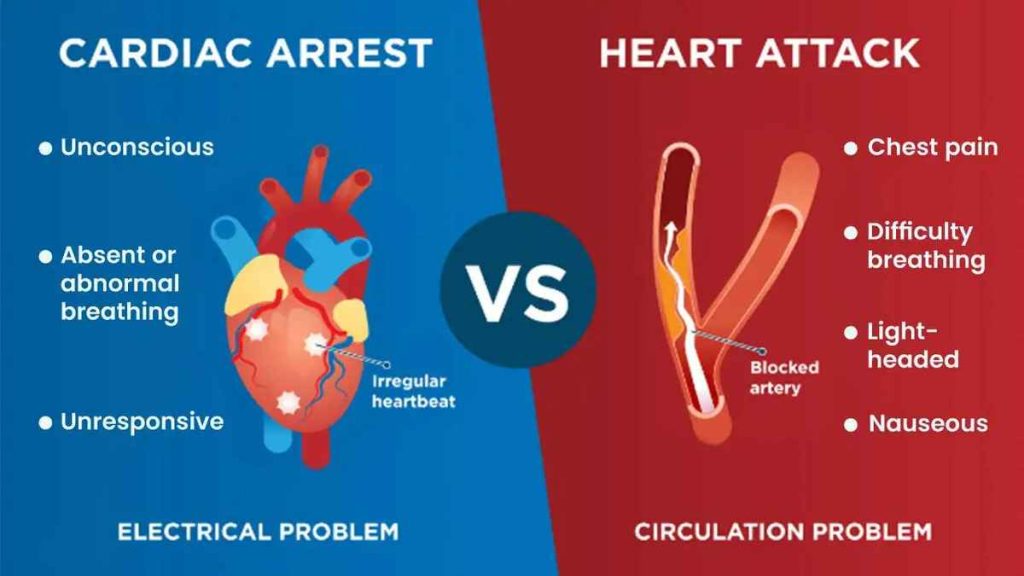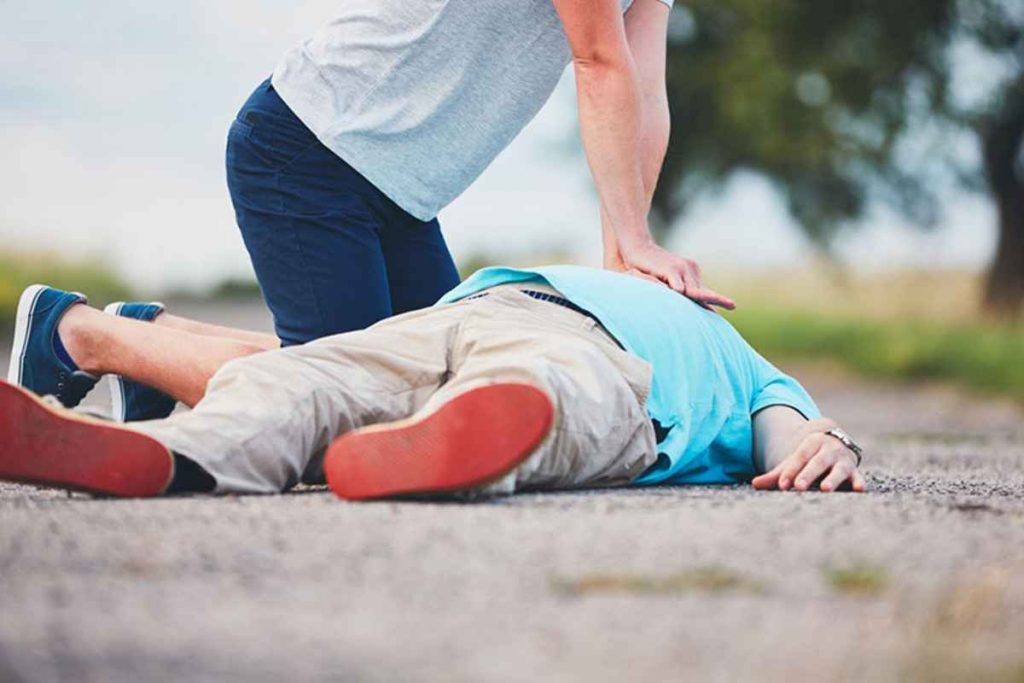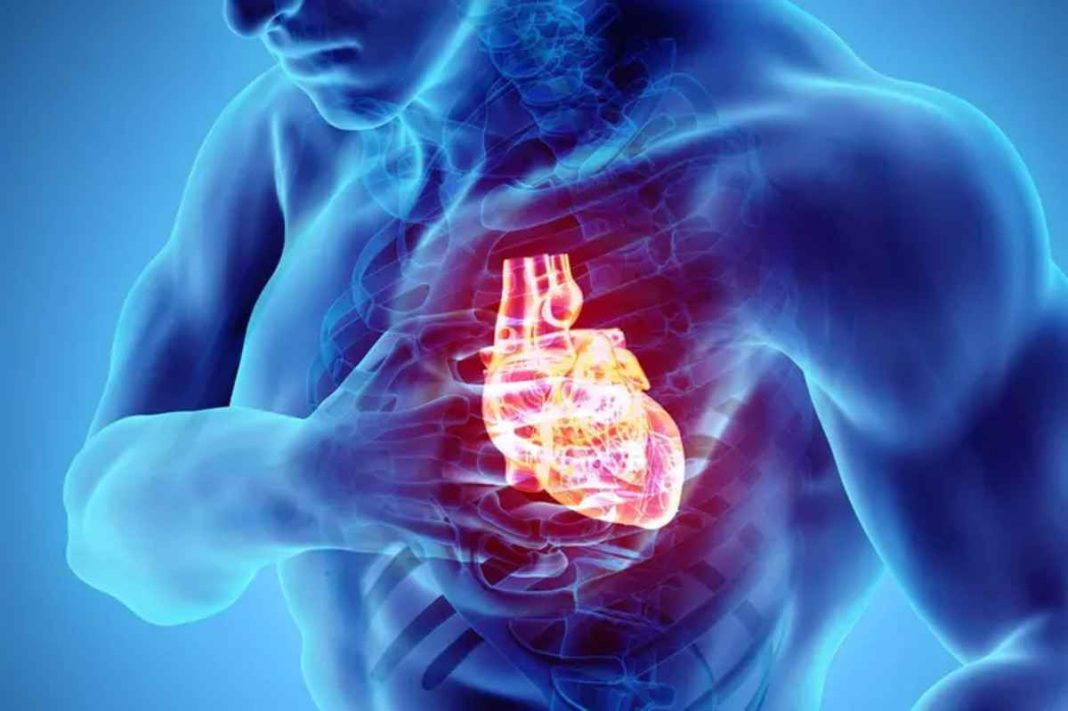Cardiac arrest is a sudden and life-threatening condition that affects millions of people around the world each year. Unlike a heart attack, which is a circulation problem, cardiac arrest is an electrical malfunction in the heart that causes it to stop beating effectively. Immediate medical intervention is critical, and yet many people remain unaware of its warning signs, causes, and lifesaving measures. This blog explores cardiac arrest in-depth to raise awareness, encourage preparedness, and ultimately help save lives.
What is Cardiac Arrest?
Cardiac arrest occurs when the heart suddenly and unexpectedly stops beating. This halts blood flow to the brain and other vital organs, leading to loss of consciousness and breathing within seconds. If not treated within minutes, cardiac arrest usually results in death.
It is often confused with a heart attack, but the two conditions are not the same. A heart attack is caused by a blockage that stops blood flow to the heart muscle, while cardiac arrest is due to a malfunction in the heart’s electrical system, often resulting in irregular rhythms called arrhythmias.
Causes of Cardiac Arrest
Cardiac arrest can strike anyone, at any time, regardless of age or health. However, several conditions and factors can increase the risk:
1. Ventricular Fibrillation (VF):
The most common cause of cardiac arrest is ventricular fibrillation, an abnormal heart rhythm where the ventricles quiver instead of contracting properly, preventing the heart from pumping blood.
2. Coronary Artery Disease:
Blocked arteries due to plaque buildup can limit blood flow and trigger electrical instability, leading to sudden cardiac arrest.
3. Cardiomyopathy:
A disease of the heart muscle that causes it to become enlarged, thickened, or rigid, making it more prone to arrhythmias.
4. Congenital Heart Defects:
In children and young adults, undetected heart abnormalities present from birth may cause sudden cardiac events.
5. Drug Overdose and Alcohol Abuse:
Illicit drugs like cocaine, or even certain prescribed medications in high doses, can disrupt heart rhythms. Excessive alcohol can also weaken heart muscles over time.
6. Severe Physical Stress:
Conditions such as major blood loss, lack of oxygen, or extreme exertion may trigger arrest in vulnerable individuals.
Symptoms of Cardiac Arrest
Cardiac arrest strikes suddenly and without warning. However, in some cases, warning signs may appear minutes or hours before the event. These include:
- Sudden collapse
- Loss of consciousness
- No pulse or breathing
- Chest pain
- Shortness of breath
- Weakness or fatigue
- Heart palpitations
Once cardiac arrest occurs, the person will be unresponsive. Time becomes a crucial factor. Every minute without CPR and defibrillation decreases the chance of survival by 7–10%.
Cardiac Arrest vs. Heart Attack: Know the Difference

| Feature | Heart Attack | Cardiac Arrest |
|---|---|---|
| Cause | Blocked blood flow | Electrical malfunction |
| Symptoms | Chest pain, nausea, sweating | Sudden collapse, no pulse |
| Consciousness | Usually conscious | Unconscious |
| Onset | Gradual (sometimes) | Sudden |
| Treatment | Medication, stents, surgery | CPR, defibrillation |
Understanding the distinction can help bystanders act appropriately in an emergency.
Diagnosis and Medical Response
Once emergency services arrive, medical professionals will confirm cardiac arrest using tools like:
- Electrocardiogram (ECG): To identify arrhythmias
- Pulse checks
- Defibrillator analysis
In the hospital, further diagnostic tests like echocardiograms, blood tests, or cardiac catheterization help determine the underlying cause and guide treatment.
Emergency Treatment: What To Do When Cardiac Arrest Occurs

1. Call for Help Immediately
Dial emergency services (e.g., 112 or 911). Every second counts.
2. Start CPR
If trained, begin cardiopulmonary resuscitation (CPR):
- Push hard and fast in the center of the chest
- Aim for 100–120 compressions per minute
- Allow full chest recoil between compressions
CPR helps maintain minimal blood flow to vital organs until professional help arrives.
3. Use an AED (Automated External Defibrillator)
If an AED is available:
- Turn it on and follow voice instructions
- Attach pads to the chest as indicated
- Deliver a shock if advised
AEDs are designed for public use and can restore normal heart rhythm in many cases of ventricular fibrillation.
Prevention and Risk Management
While not all cases of cardiac arrest can be predicted, certain measures can reduce risk significantly:
1. Regular Health Check-ups
Early detection of high blood pressure, cholesterol, or arrhythmias can prevent complications.
2. Lifestyle Changes
- Healthy Diet: Rich in fruits, vegetables, and low in saturated fats
- Exercise: At least 150 minutes of moderate activity weekly
- Avoid Smoking and Limit Alcohol Intake
3. Manage Chronic Conditions
People with diabetes, heart disease, or obesity must follow treatment plans strictly.
4. Genetic Screening
Families with a history of sudden cardiac death may benefit from screening and early interventions.
5. Implantable Devices
In high-risk patients, Implantable Cardioverter Defibrillators (ICDs) monitor and correct dangerous rhythms.
Survival Rates and Prognosis
Survival rates for out-of-hospital cardiac arrests vary widely depending on location, immediate response, and access to defibrillation. On average:
- Survival rate with bystander CPR and AED: Up to 40%
- Without intervention: Less than 10%
Hospital recovery depends on how quickly oxygen-rich blood was restored to the brain. Long-term neurological damage is a possibility in cases with delayed treatment.
Raising Awareness and Community Preparedness
The key to improving outcomes lies in community education and training:
- Encourage CPR and AED training in schools, offices, and public places
- Install AEDs in gyms, malls, airports, and other high-traffic areas
- Support public health campaigns focusing on heart health and sudden cardiac arrest
Conclusion
Cardiac arrest is a formidable medical emergency that can strike without warning, but awareness and swift action can be the difference between life and death. Understanding its causes, recognizing the symptoms, and knowing how to respond are crucial not just for medical professionals, but for every individual. Whether you’re a healthcare worker, teacher, parent, or student—learning CPR and promoting heart health can empower you to save a life when it matters most.
FAQ’s:
Q. What is the difference between cardiac arrest and a heart attack?
A: Cardiac arrest occurs when the heart suddenly stops beating due to an electrical malfunction. A heart attack, on the other hand, is caused by a blocked artery that reduces blood flow to the heart muscle. While a heart attack can lead to cardiac arrest, the two are not the same.
Q. Can cardiac arrest be reversed?
A: Yes, if treated quickly. Immediate CPR and defibrillation with an AED can restore a normal heart rhythm. The sooner treatment begins, the better the outcome.
Q. What is an AED and how does it work?
A: An AED (Automated External Defibrillator) is a portable device that checks heart rhythm and delivers an electric shock to help restore a normal rhythm. It’s designed for public use and provides voice prompts for guidance.
Q. How long can someone survive without a heartbeat?
A: Without a heartbeat, brain damage can begin within 4–6 minutes, and death can occur in 10 minutes or less without intervention. That’s why rapid CPR and defibrillation are critical.



